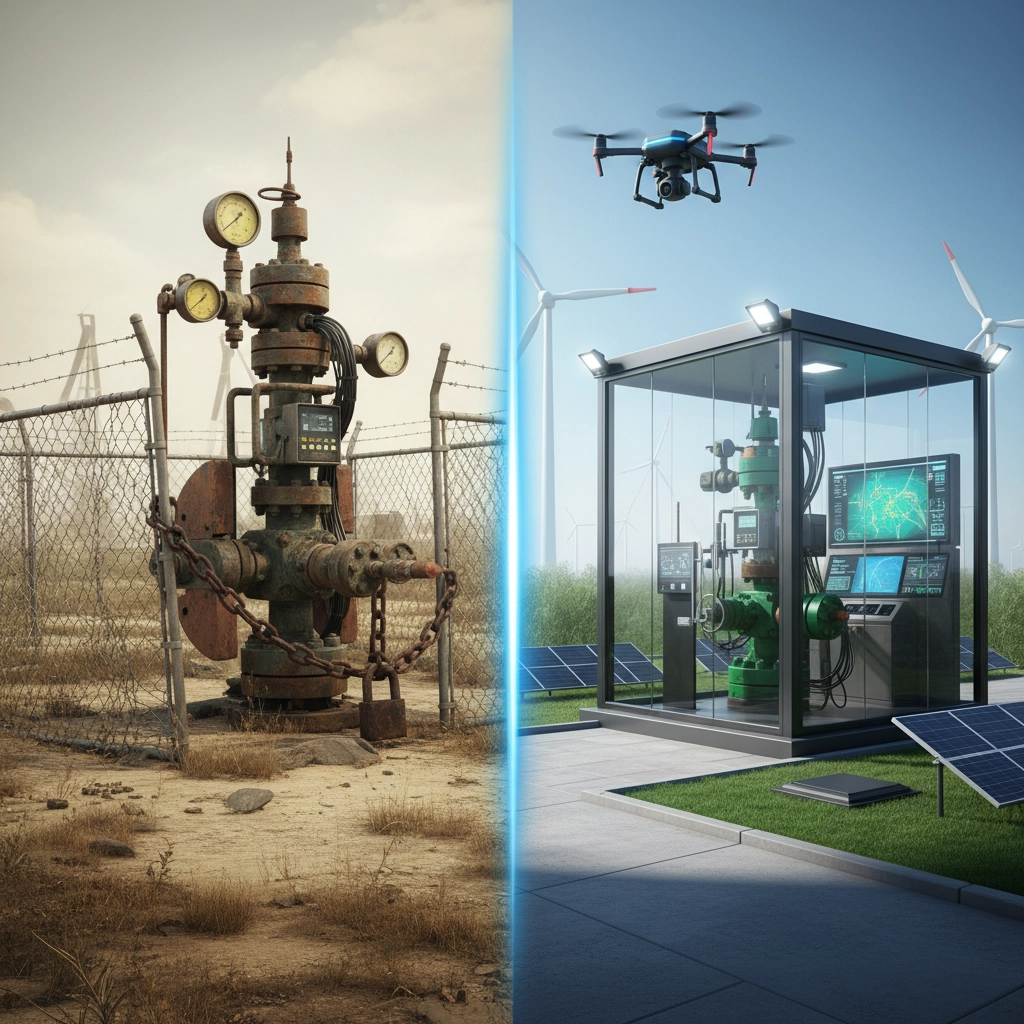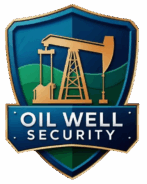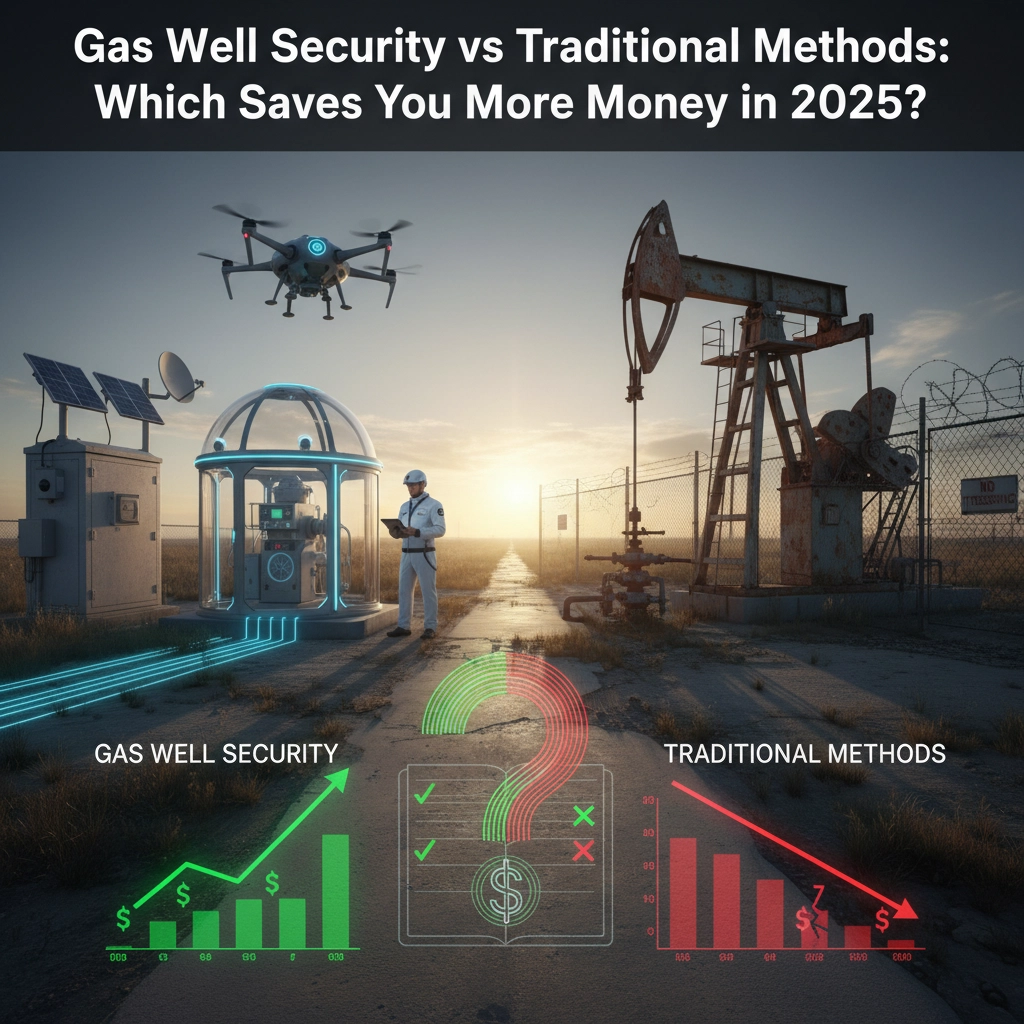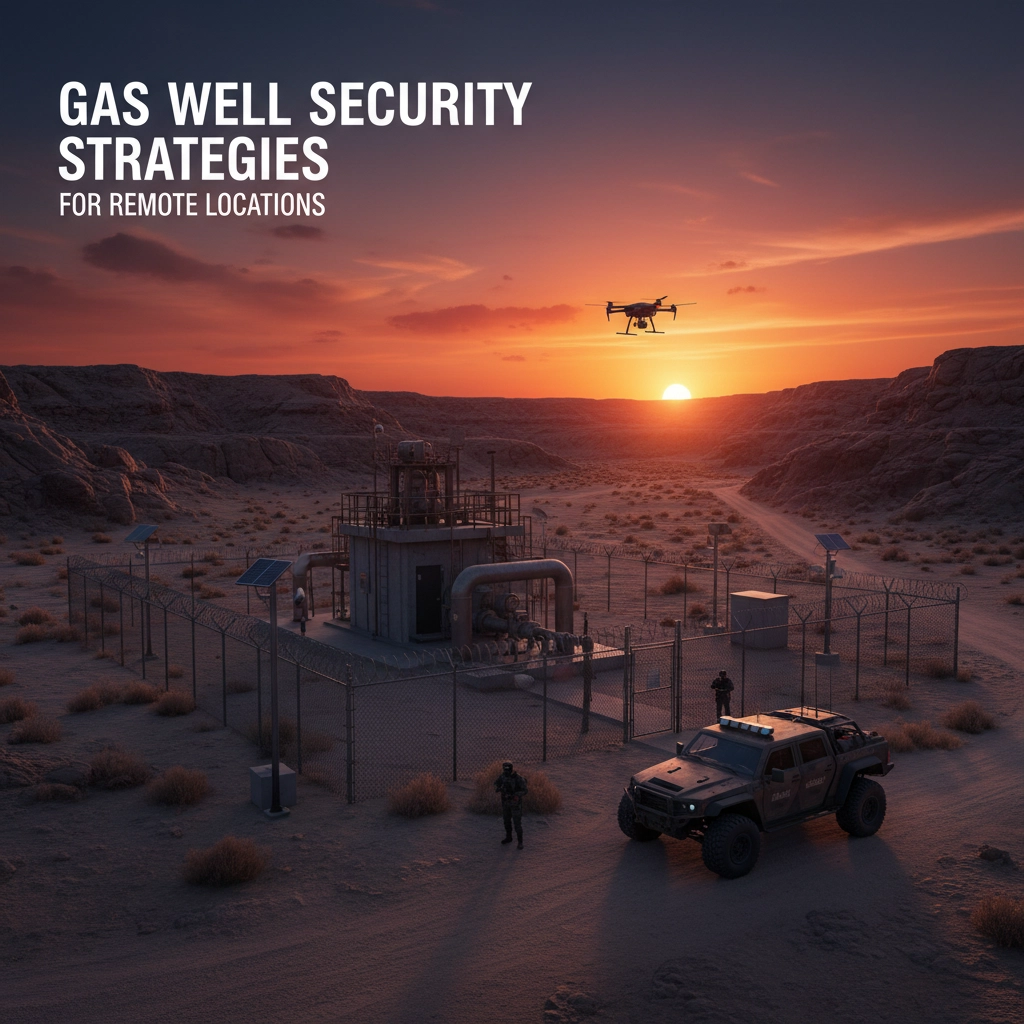If you're still relying on traditional security methods for your gas wells, you're likely hemorrhaging money without even realizing it. The numbers don't lie: operators who've made the switch to modern gas well security systems are seeing cost reductions of 15-30% while simultaneously boosting production and preventing costly equipment failures.
But here's what most operators don't understand: the real question isn't whether modern security costs more upfront. It's whether you can afford NOT to upgrade in 2025's increasingly competitive energy market.
The Hidden Costs of Traditional Gas Well Security
Your current security approach probably looks something like this: scheduled manual inspections, physical security guards, and reactive maintenance when something goes wrong. These methods worked decades ago, but they're now the most expensive way to protect your assets.
Traditional security methods burden your operation with three major cost drains:
Labor-intensive oversight requires multiple personnel to physically visit scattered well sites across vast areas. Your teams spend more time driving between locations than actually securing them.
Reactive maintenance means you discover problems after they've already damaged equipment or compromised production. By the time your crew identifies a pump failure or security breach, you're looking at expensive repairs and lost revenue.
Limited visibility keeps you in the dark about what's happening at your wells between inspections. Without real-time data, you're essentially flying blind until the next scheduled visit.

Modern Gas Well Security: The Game-Changing Alternative
Today's security solutions flip this entire model on its head. Remote monitoring technology, autonomous drone surveillance, and AI-powered analytics work together to create a comprehensive security ecosystem that protects your wells 24/7 while dramatically reducing operational costs.
Here's how modern systems transform your security economics:
Continuous monitoring eliminates the need for frequent on-site visits. Instead of sending crews to check each well manually, you monitor multiple locations simultaneously from a central command center.
Predictive maintenance catches problems before they become expensive failures. Real-time sensors detect equipment irregularities and alert your team to address issues during planned maintenance windows rather than emergency situations.
Automated threat detection identifies security breaches, unauthorized personnel, and equipment malfunctions instantly: not days later during the next inspection.
The Numbers That Matter: Real Cost Savings
Let's break down the actual financial impact of upgrading your gas well security in 2025:
Direct Labor Cost Reductions
One mid-sized operator managing 50 wells eliminated 60% of their routine inspection visits after implementing remote monitoring systems. This translated to annual savings of $180,000 in labor costs alone, not including the reduced fuel and vehicle maintenance expenses.
The math is straightforward: if your crew currently makes weekly visits to each well site, remote monitoring can reduce that frequency to monthly or even quarterly visits for routine checks. Your personnel can then focus on high-priority maintenance and security responses rather than repetitive inspections.
Maintenance Cost Breakthrough
Here's where the numbers get really impressive. A recent case study documented a 30% reduction in maintenance costs for an operator who switched from manual to remote monitoring systems. The key? Early detection of equipment issues before they escalate into major failures.
Traditional methods only catch problems after they've developed into expensive repairs. Modern systems identify bearing wear, pressure irregularities, and security vulnerabilities in real-time, allowing you to address them during scheduled maintenance windows at a fraction of the emergency repair cost.

Production Optimization Benefits
Beyond direct cost savings, upgraded security systems deliver production improvements that compound your financial benefits. The same operator mentioned above achieved a 15% increase in overall production without any additional capital investment.
This production boost comes from two sources: reduced downtime due to predictive maintenance, and optimized operations through continuous data monitoring. When you know exactly what's happening at each well site in real-time, you can make adjustments that maximize output while preventing costly shutdowns.
Technology Integration: The Competitive Advantage
Your competitors are already making this transition. The oil and gas security market is projected to grow from $81.75 billion in 2024 to $220.33 billion by 2035: and that growth is driven by operators recognizing the superior economics of modern security systems.
Drone surveillance provides comprehensive site monitoring without the ongoing labor costs of human guards. Autonomous drones can patrol multiple well sites on programmed schedules, detecting intrusions, equipment issues, and environmental hazards while your team focuses on other priorities.
AI-powered analytics transform raw security data into actionable intelligence. Instead of reviewing hours of surveillance footage, AI systems automatically flag unusual activities and equipment anomalies for human review.
Integrated access control replaces traditional lock-and-key security with smart systems that track personnel access, monitor unauthorized entry attempts, and maintain detailed audit trails for regulatory compliance.
The 2025 Market Reality Check
Here's what many operators miss: well costs are expected to decline only about 1% in 2025, with rising import tariffs on key materials potentially offsetting efficiency gains. In this environment, operational efficiency improvements become crucial for maintaining profitability.
You can't control steel prices or import tariffs, but you can control your security and monitoring costs. Modern gas well security systems represent one of the few areas where you can achieve dramatic cost reductions while improving asset protection.

Making the Transition: What You Need to Know
If you're ready to upgrade your gas well security, focus on these critical implementation factors:
Scalability ensures your system can grow with your operations. Choose solutions that work for your current well count but can expand as you add new sites.
Integration capabilities allow your security system to work with existing operations technology. The most cost-effective solutions integrate with your current SCADA systems and maintenance management platforms.
Veteran-led expertise makes the difference between successful implementation and costly mistakes. Security companies with military backgrounds understand both the technology and the operational requirements of protecting critical infrastructure.
Your Next Steps
The evidence is clear: modern gas well security systems deliver superior cost savings compared to traditional methods in 2025. Operators who make the transition are seeing 15-30% cost reductions while improving production and security outcomes.
But here's the crucial point: every day you delay this upgrade is another day of unnecessary expenses and security vulnerabilities. Your competitors are already implementing these systems and gaining competitive advantages in operational efficiency and cost management.
The question isn't whether you can afford to upgrade your gas well security. It's whether you can afford not to upgrade while your competitors pull ahead with superior economics and protection.
Ready to discover your specific cost savings potential? Contact Oil Well Security today to discuss how modern security systems can transform your operational economics. Our veteran-led team understands both the technology and the unique challenges of protecting gas well infrastructure.
Contact us today:
- Email: info@oilwellsecurity.com
- Phone: (970) 465-2525
Don't let outdated security methods continue draining your profits. Make 2025 the year you take control of your security costs and gain the competitive advantage your operation deserves.



